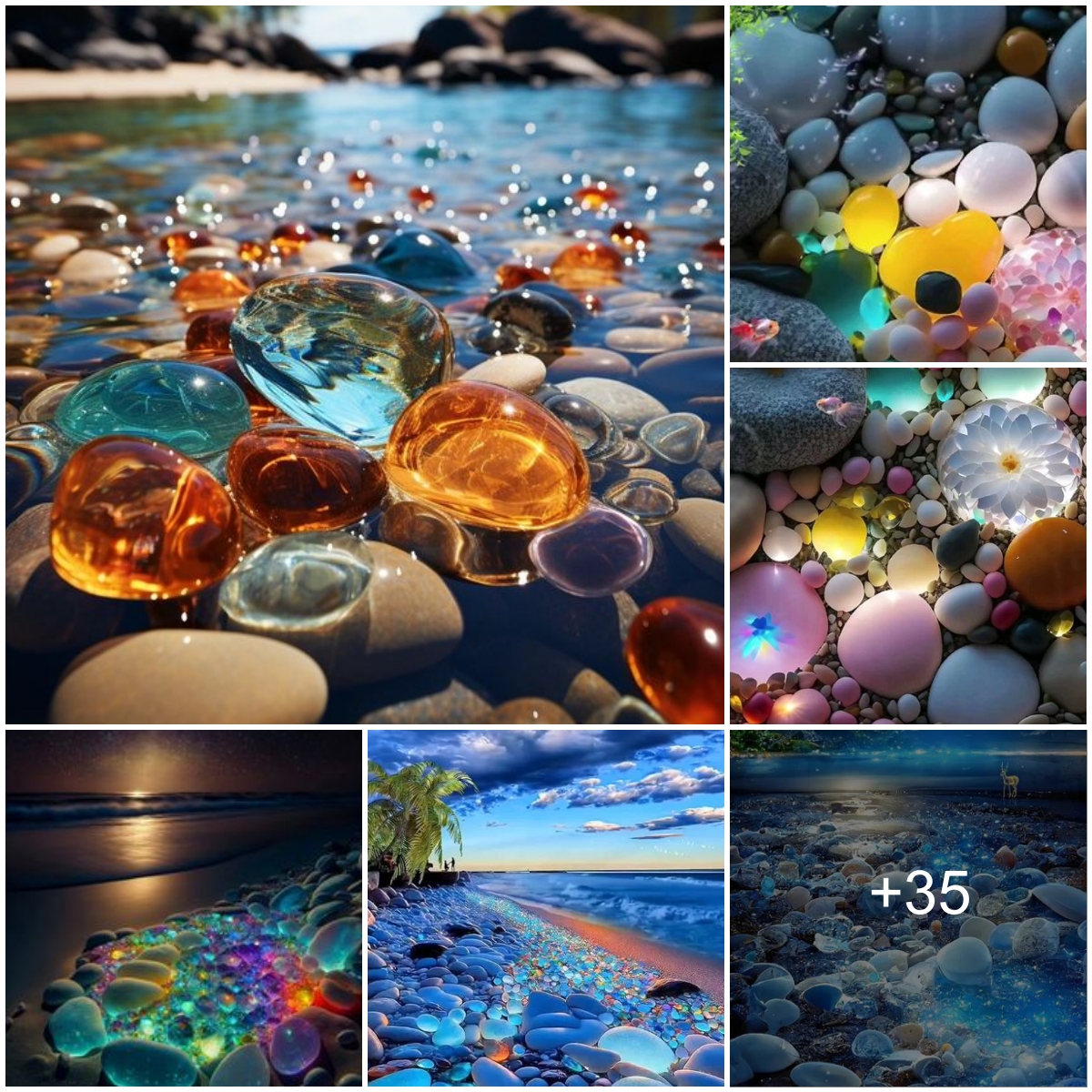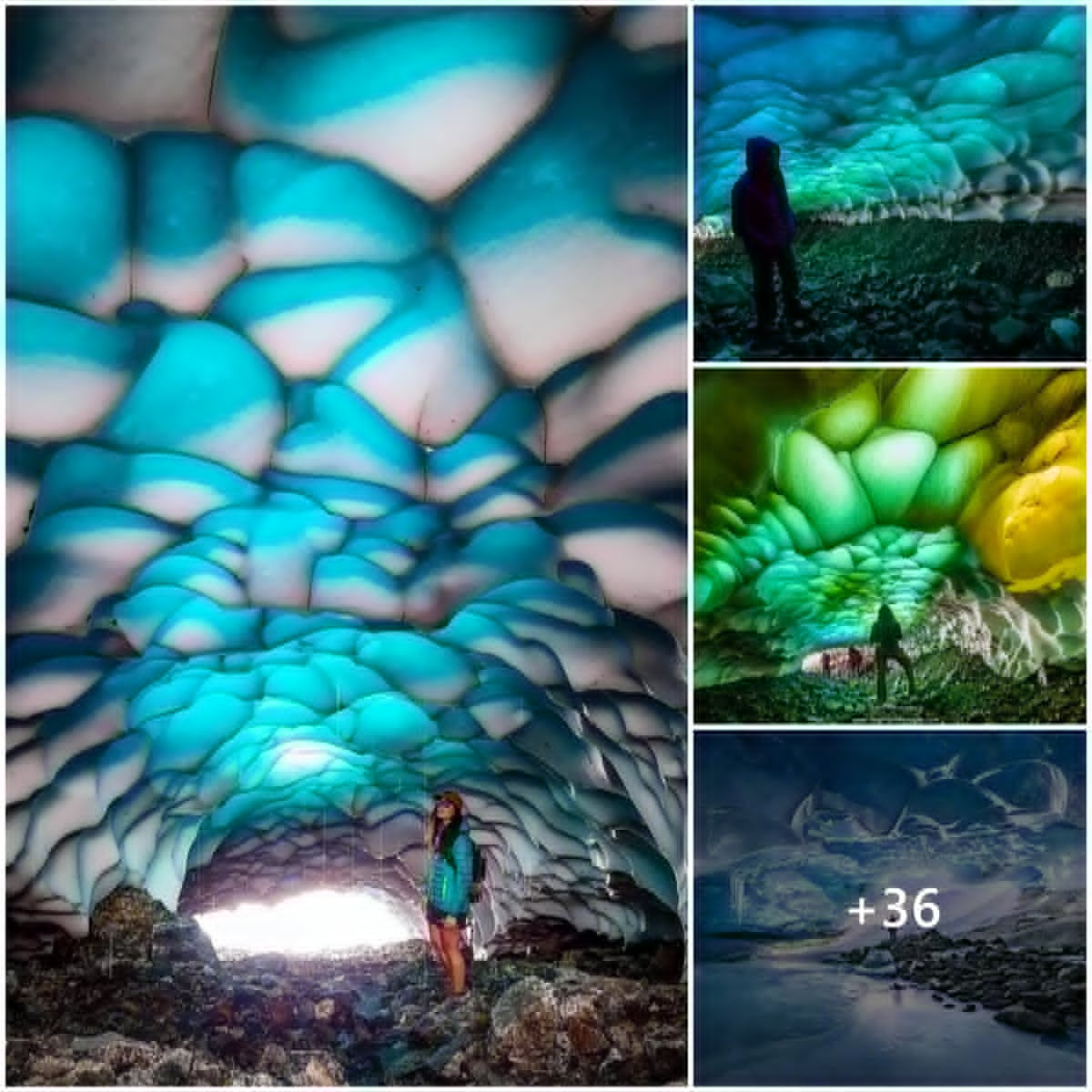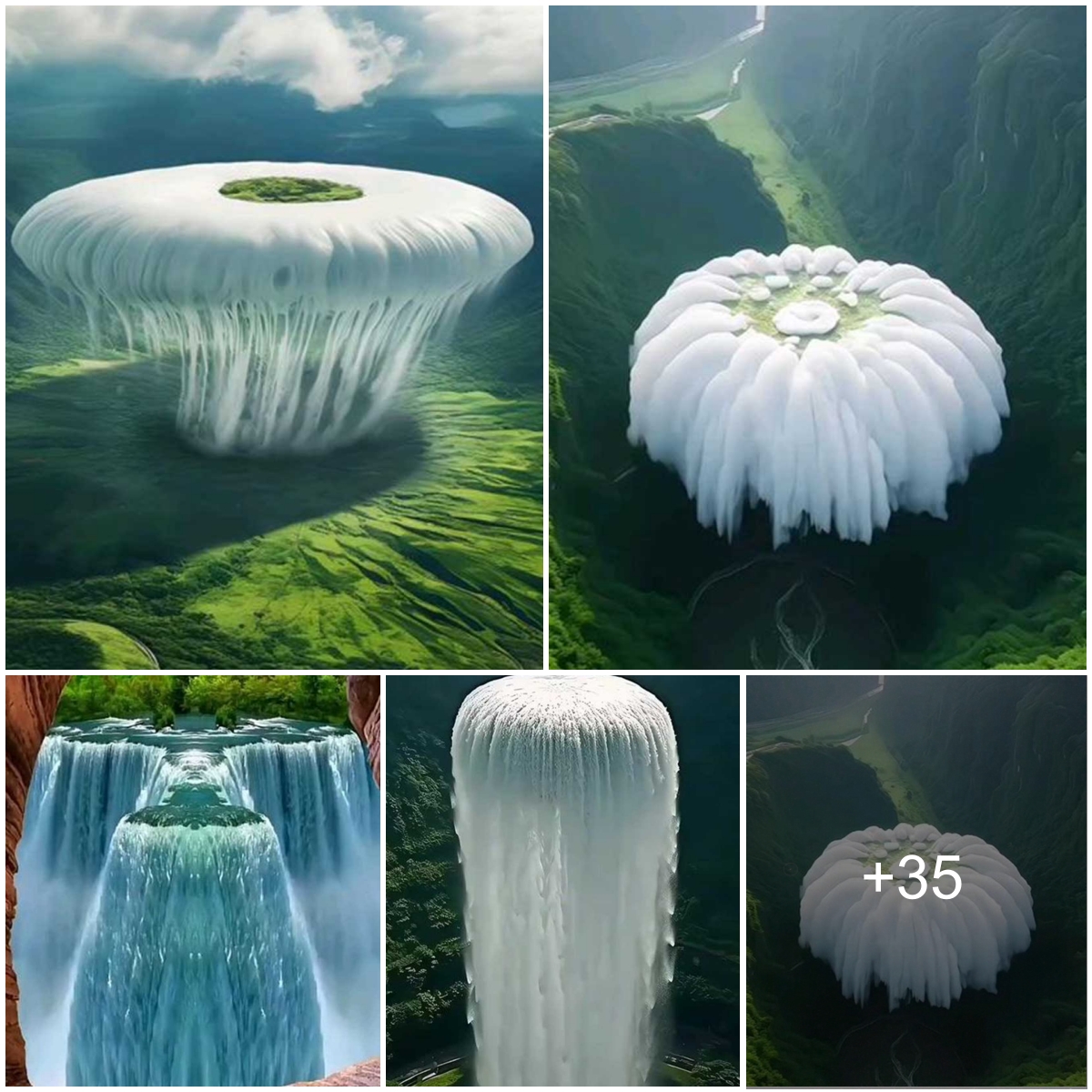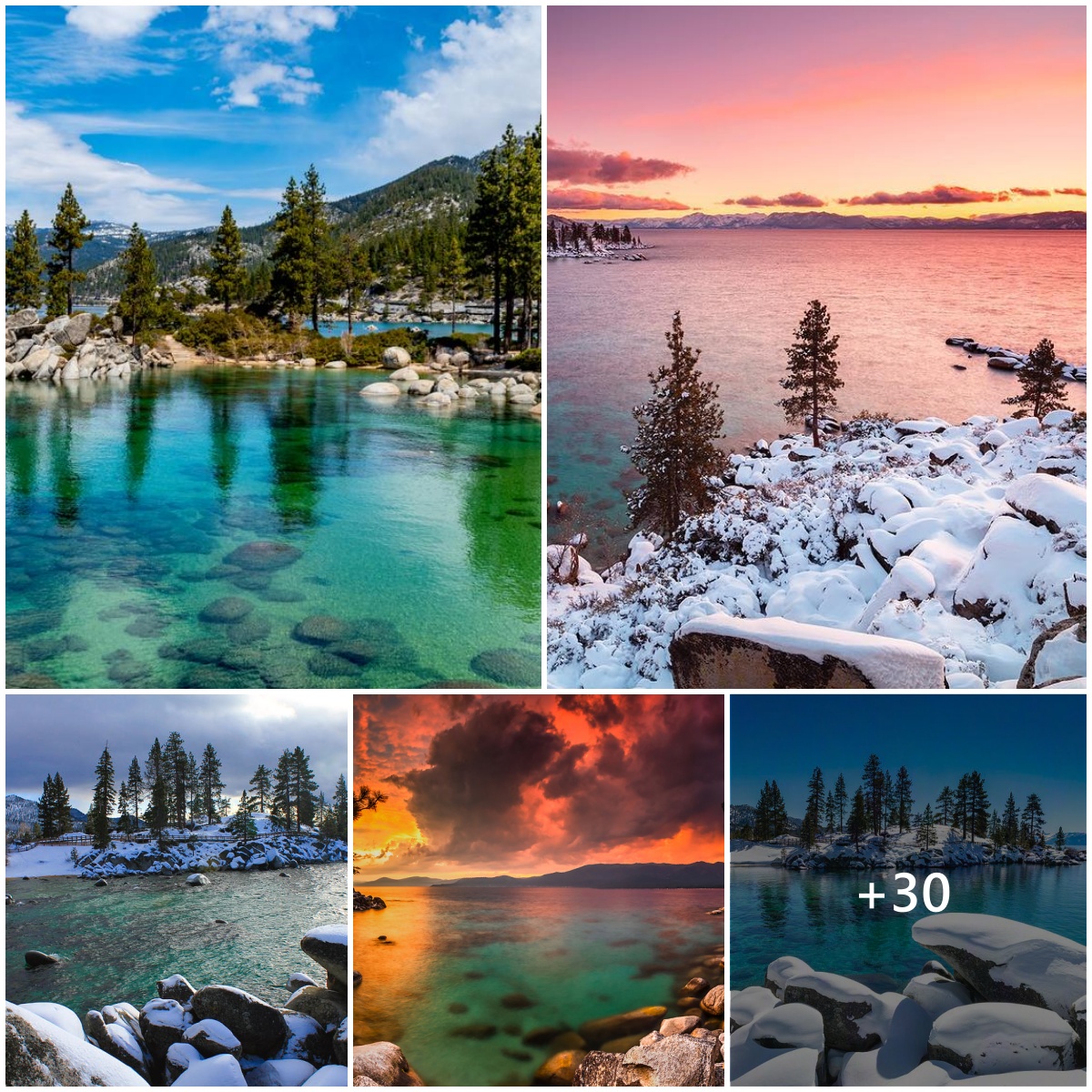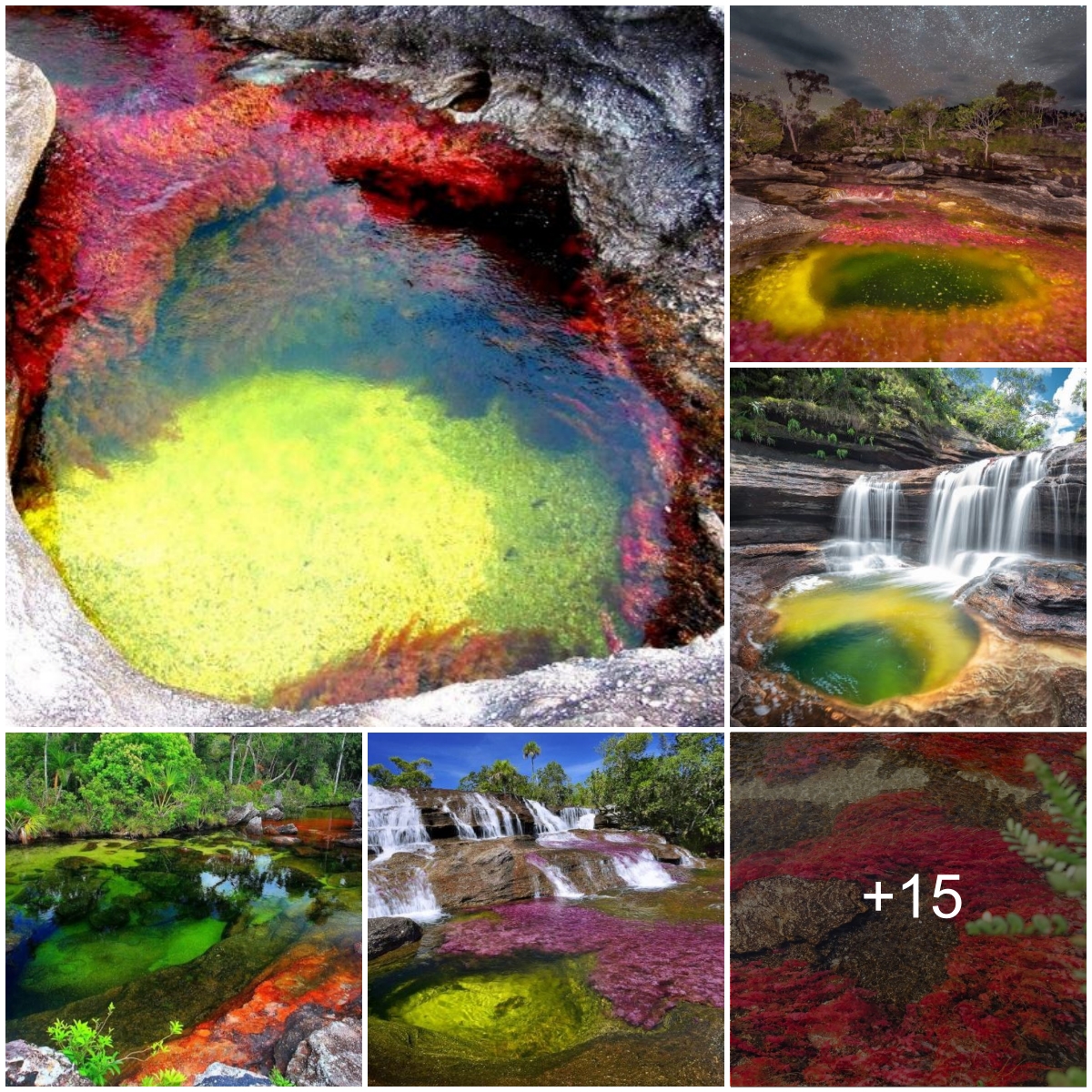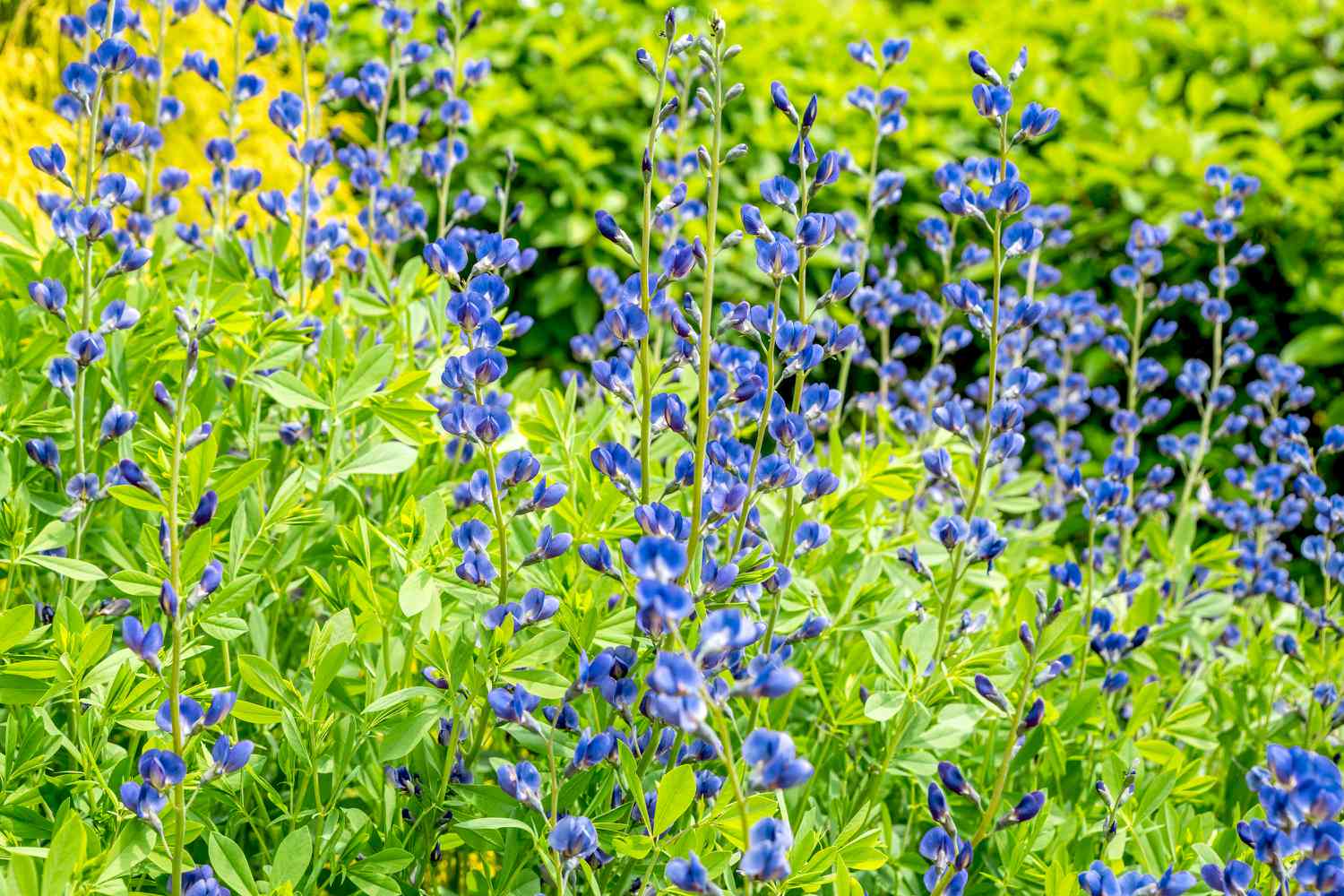
It can be difficult for gardeners to find plants that add a pop of blue to their gardens. Many plants that are advertised as producing blue blooms actually produce blooms that lean more toward the colors lavender or purple rather than a true blue. Sunlight also plays tricks on coloring, and the photos you see in seed catalogs don’t often match the blooms you’ll see in your garden. Blue flowers might be elusive, but they do exist.
Here are 12 plants that will add the elusive blue color to your garden.
-
01 of 12
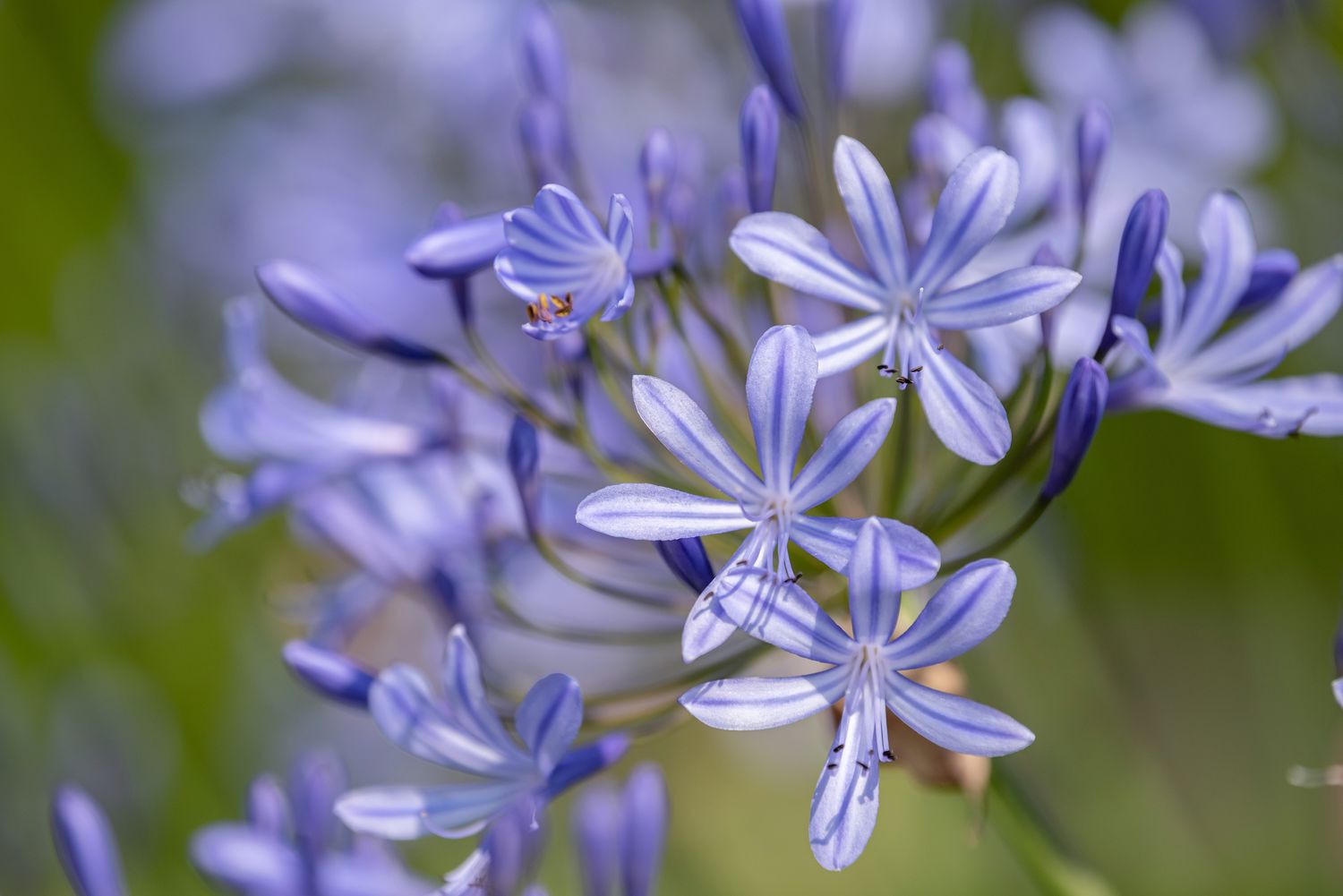
The Spruce / Evgeniya Vlasova The genus Agapanthus contains about ten species, all with large clusters of flowers in shades of blue or white. Agapanthus africanus is known as the lily of the Nile, the African blue lily, or just the African lily. As its common names suggest, its flowers are somewhat lily-like, and they bloom through most of the summer. It is a tender perennial that is reliably hardy down to USDA Hardiness Zone 8. It grows from a fleshy rhizome and can be dug and stored for the winter in cooler areas.
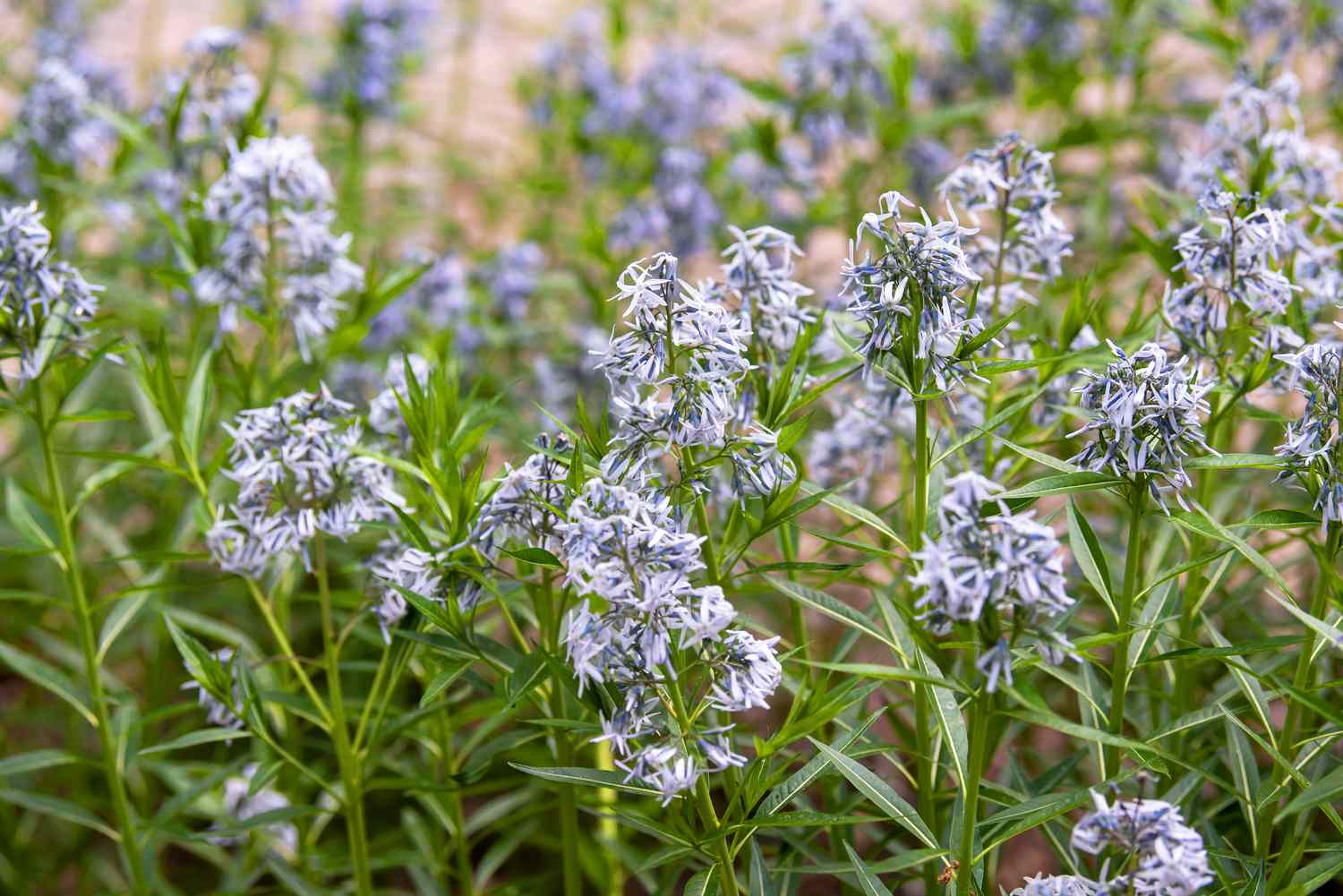
The Spruce / Evgeniya Vlasova There are enough species of Amsonia for everyone to find their favorite shade of blue. The fluffy clusters of flowers are composed of many small, star-shaped blooms, giving this plant its common name of blue star. The flowers stay lovely for weeks, and even the seed pods are attractive. Arkansas blue star (Amsonia hubrichtii) was named the 2011 Perennial Plant of the Year. It has deep blue flowers and narrow, lance-shaped leaves that burst into gold in the fall.
-
03 of 12
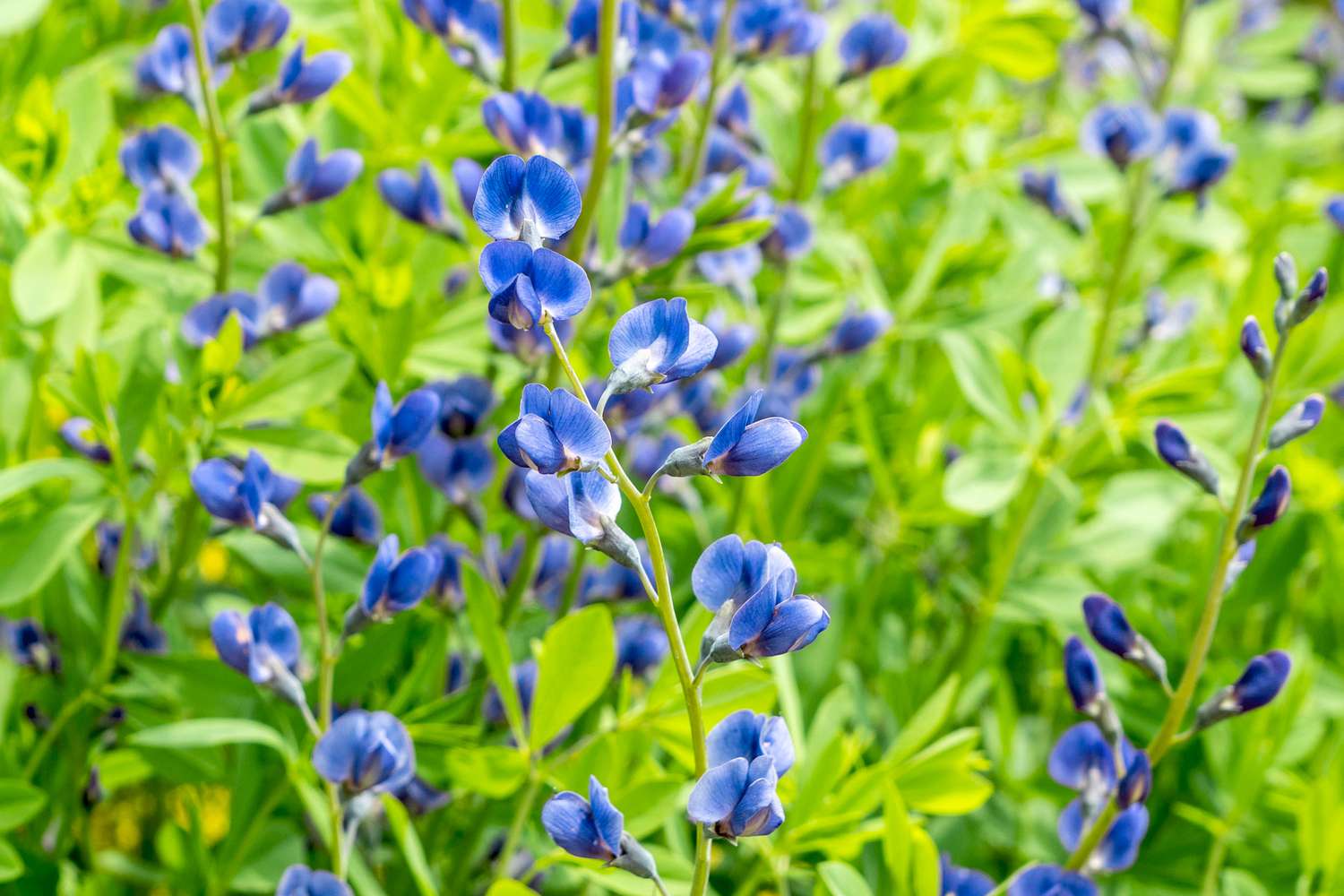
The Spruce / Adrienne Legault A close look at the leaves and flowers of Baptisia australis should indicate to you that it is in the pea family. Native to eastern North America, this plant is popular for making blue dye. Its common name is blue false indigo. The plant can be slow to get established, but once it is, it will send down a deep taproot and does not like to be transplanted.
-
04 of 12
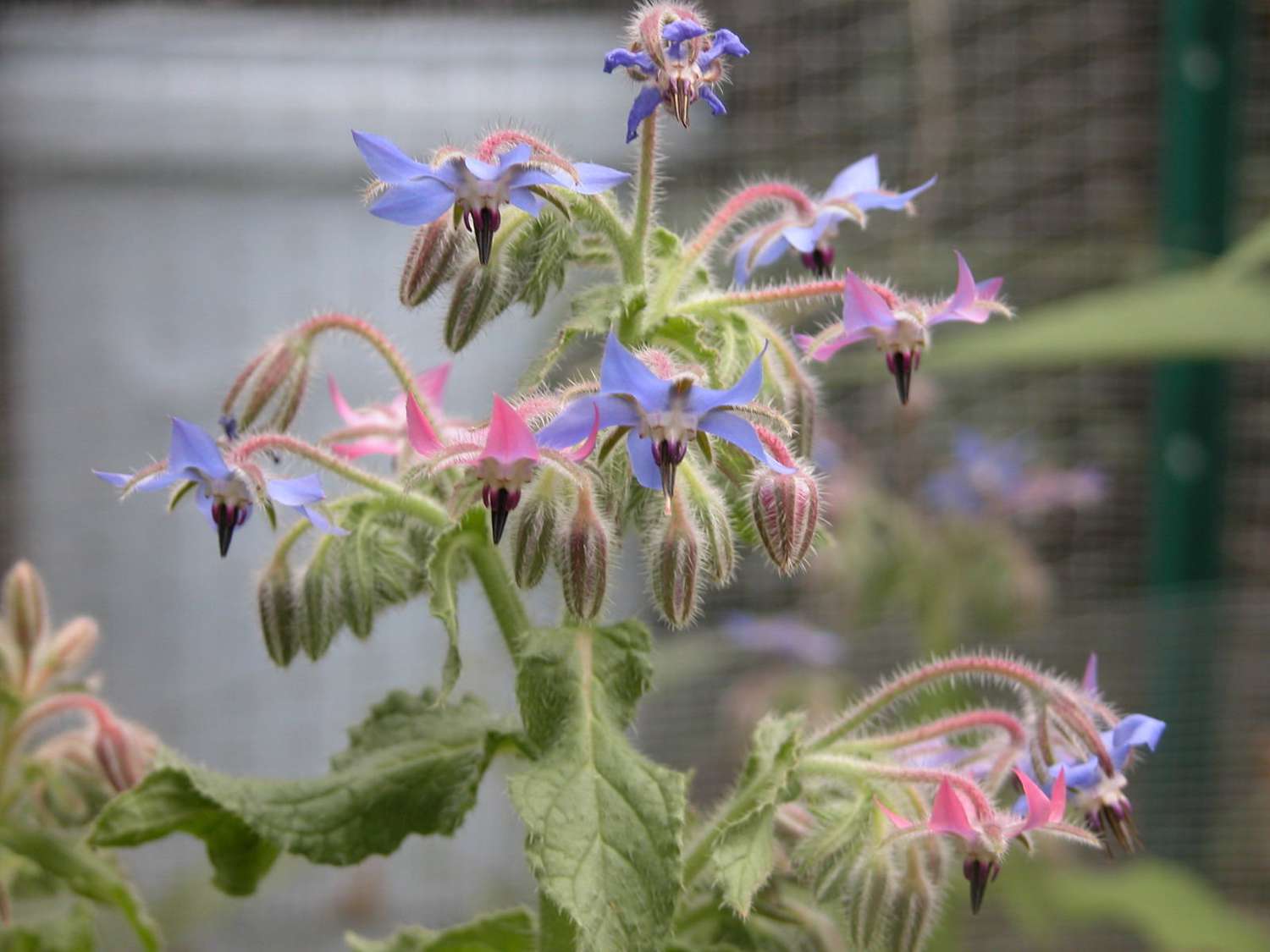
The Spruce / Marie Iannotti Borago officinalis is an underused plant, which is ironic because it’s a member of the forget-me-not family. Borage is an easy-to-grow annual that readily self-sows. It is a culinary herb with a scent and flavor similar to cucumbers. The leaves become prickly as they mature, but you should let the plant come into bloom with its lively blue blossoms, which also have a mild cucumber aroma. Its ability to attract pollinators into your garden is one of its greatest attributes.
-
05 of 12
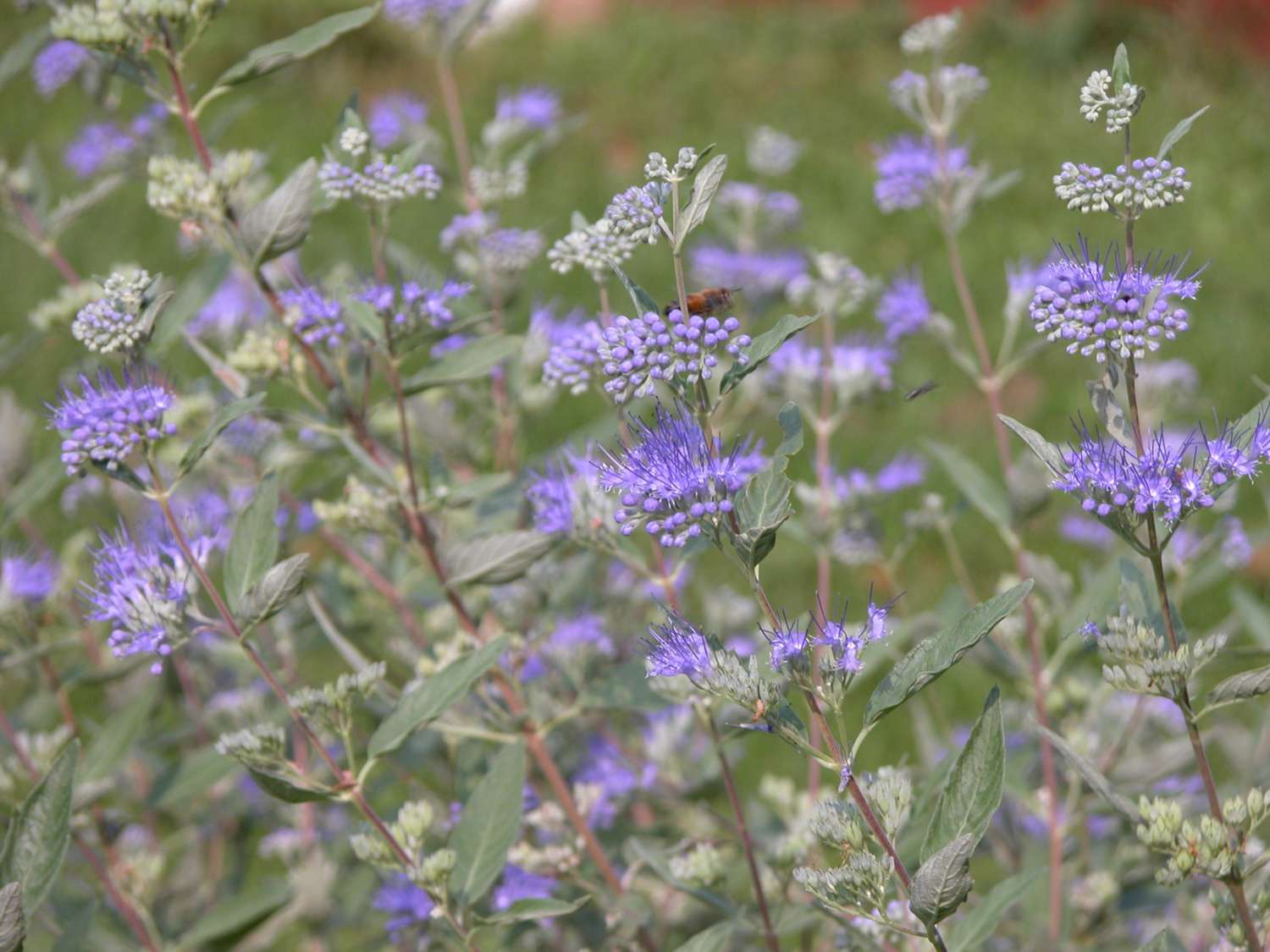
The Spruce / Marie Iannotti The blue mist shrub (Caryopteris x clandonensis) really does create a haze of blue in late summer. When in bloom, it will be covered with buzzing bees that love its nectar-rich flowers. It is often considered a sub-shrub, meaning it has woody stems. The plant blooms on new wood and should be cut to within inches of the ground in early spring. Other than that, it is maintenance-free. There are several cultivars available in various shades of blue. ‘Grand Bleu’ is a rich, dark blue; ‘Longwood Blue’ is a bright, pale blue; and ‘Sunshine Blue’ has lavender-blue flowers on bright gold foliage.
-
06 of 12
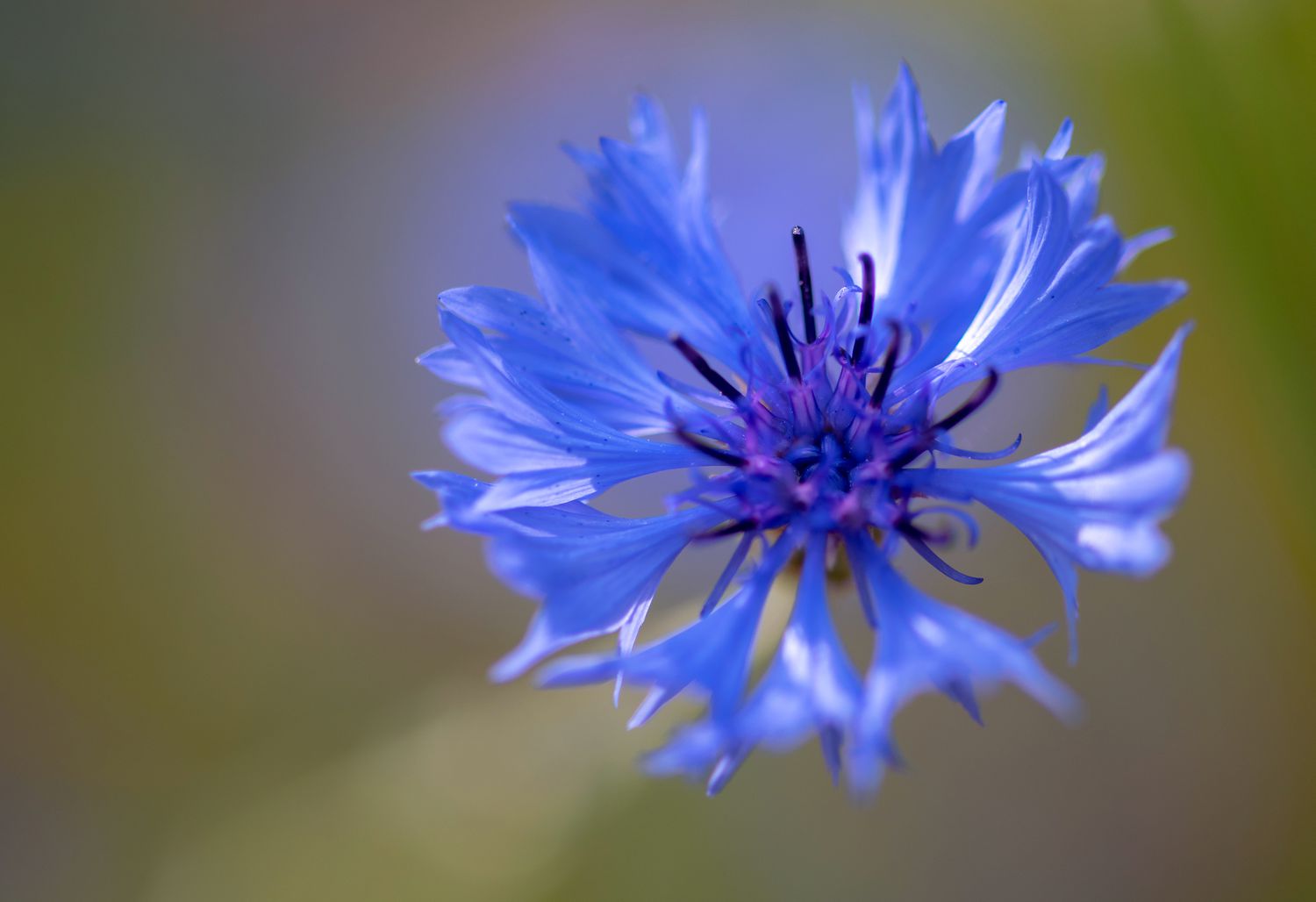
The Spruce / Evgeniya Vlasova Whether you call them cornflowers or bachelor’s buttons, Centaurea cyanus is one charming wildflower. It got the name cornflower because it grew wild in European cornfields. Bachelor’s button came about because bachelors apparently would wear the flower in their lapels when they went courting. The plant’s abundant flowers are ruffled disks, somewhat resembling thistles without the thorns. It is an annual that will self-sow. The mountain bluet (Centaurea montana) is considered a perennial cornflower.
-
07 of 12
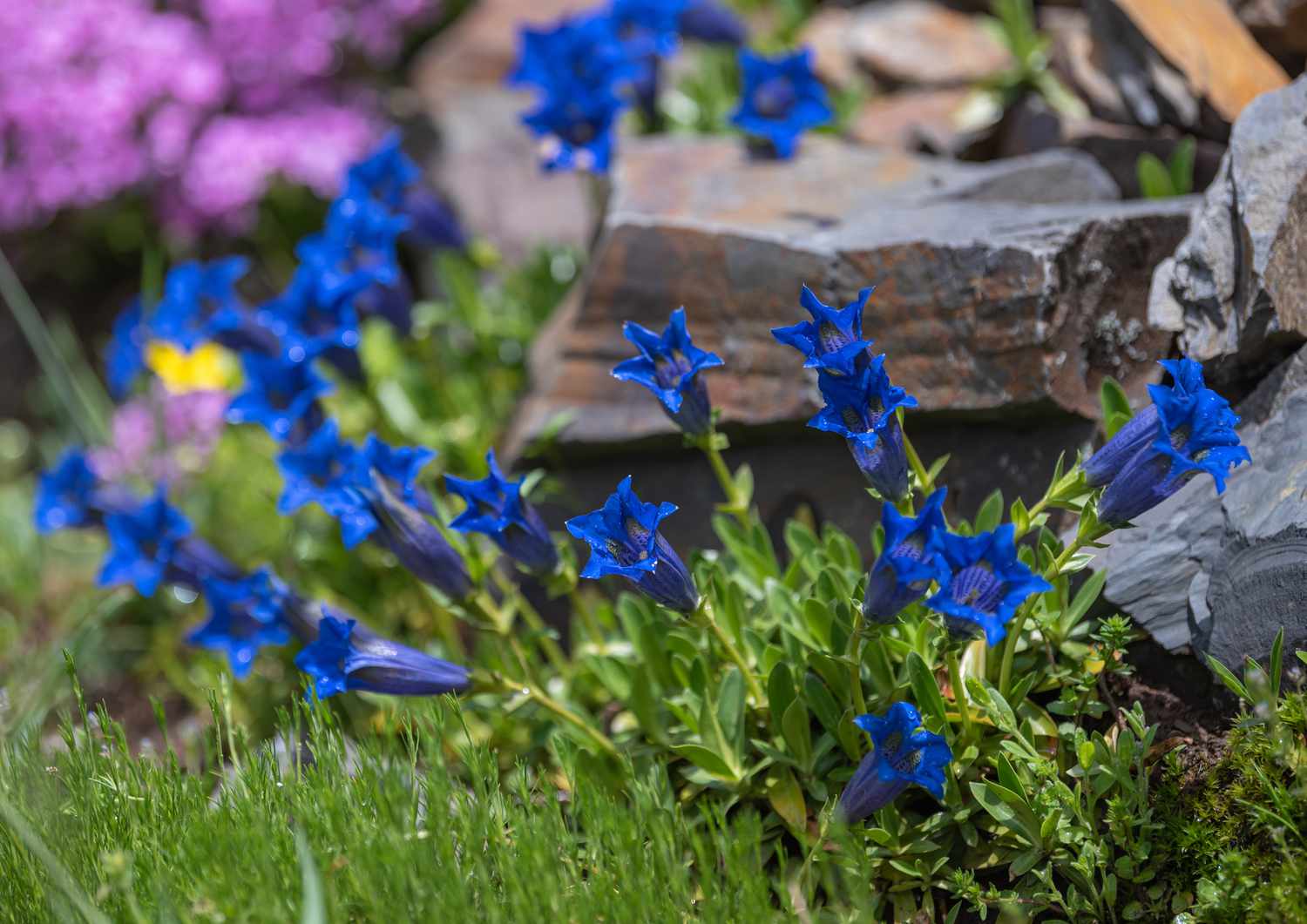
The Spruce / Evgeniya Vlasova There are hundreds of species of Gentians. Not all of them are blue, but so many are that it is impossible to mention blue flowers and not include them. Naturally, there is much diversity among the species, but most are alpine or woodland plants that prefer the cooler, wet seasons. Gentiana dahurica is a late-season bloomer and tends to sprawl a bit more than other varieties. It has the familiar five-petal, slightly tubular shape of most gentians. Some of the spring-blooming species, including Gentian alpina and Gentian angustifolia, are more mat-forming with tubular flowers.
-
08 of 12
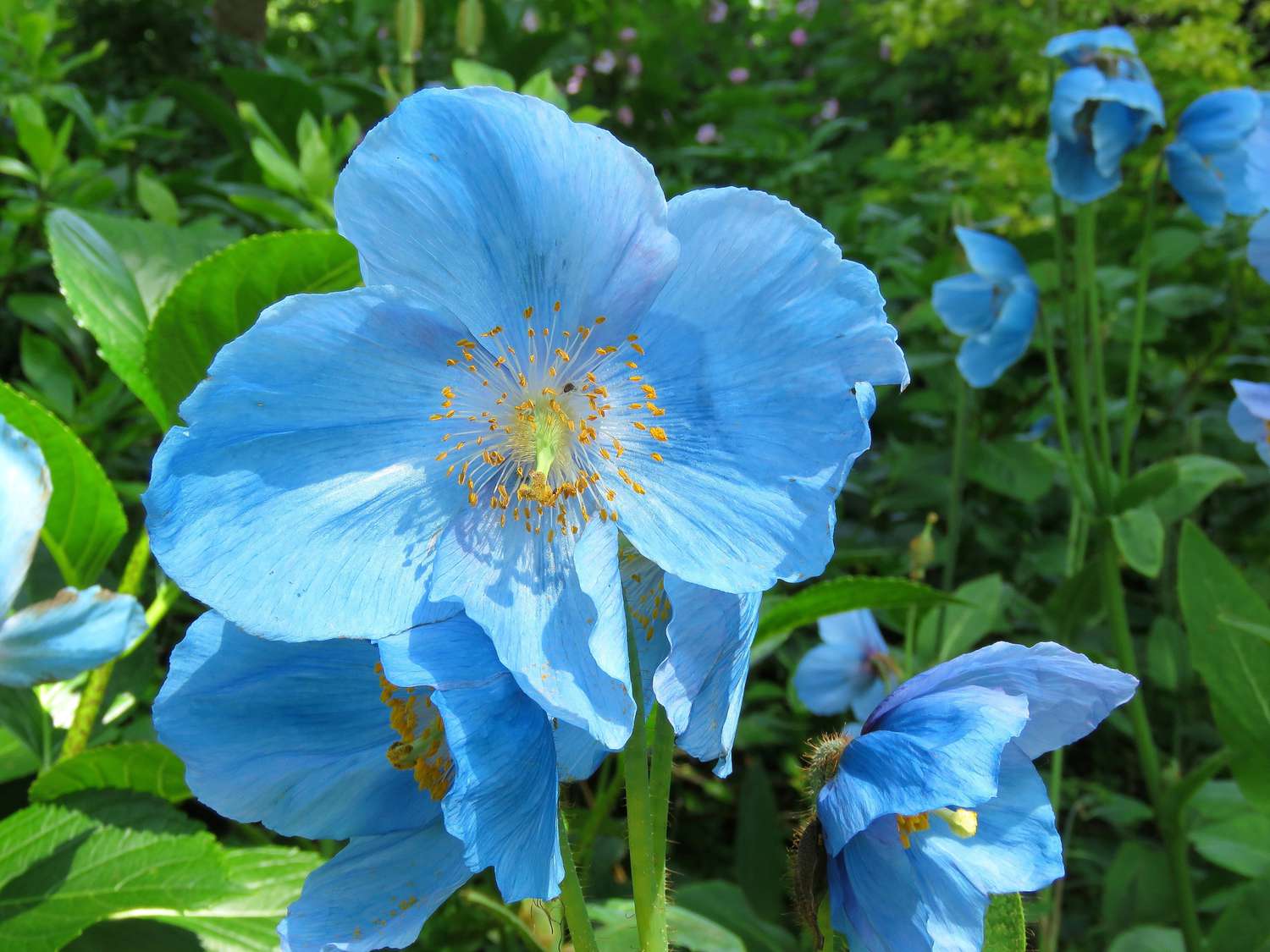
Steven Nadin / Getty Images The Himalayan blue poppy (Meconopsis betonicifolia) is a gardening legend. Some even consider it the test of a gardening master. It can be difficult to grow because it is native to the mountains of southeastern Tibet, where it lives in a shady, moist shelter. Not many of us can create the climate of Tibet in our gardens, but enough gardeners have had success to make it worth a try. Under good conditions, it can spread and perennialize, but even growing the plant for a single season is worth the treat. The seed packets usually come with detailed directions for sowing, and some gardeners report great success winter sowing these seeds.
-
09 of 12
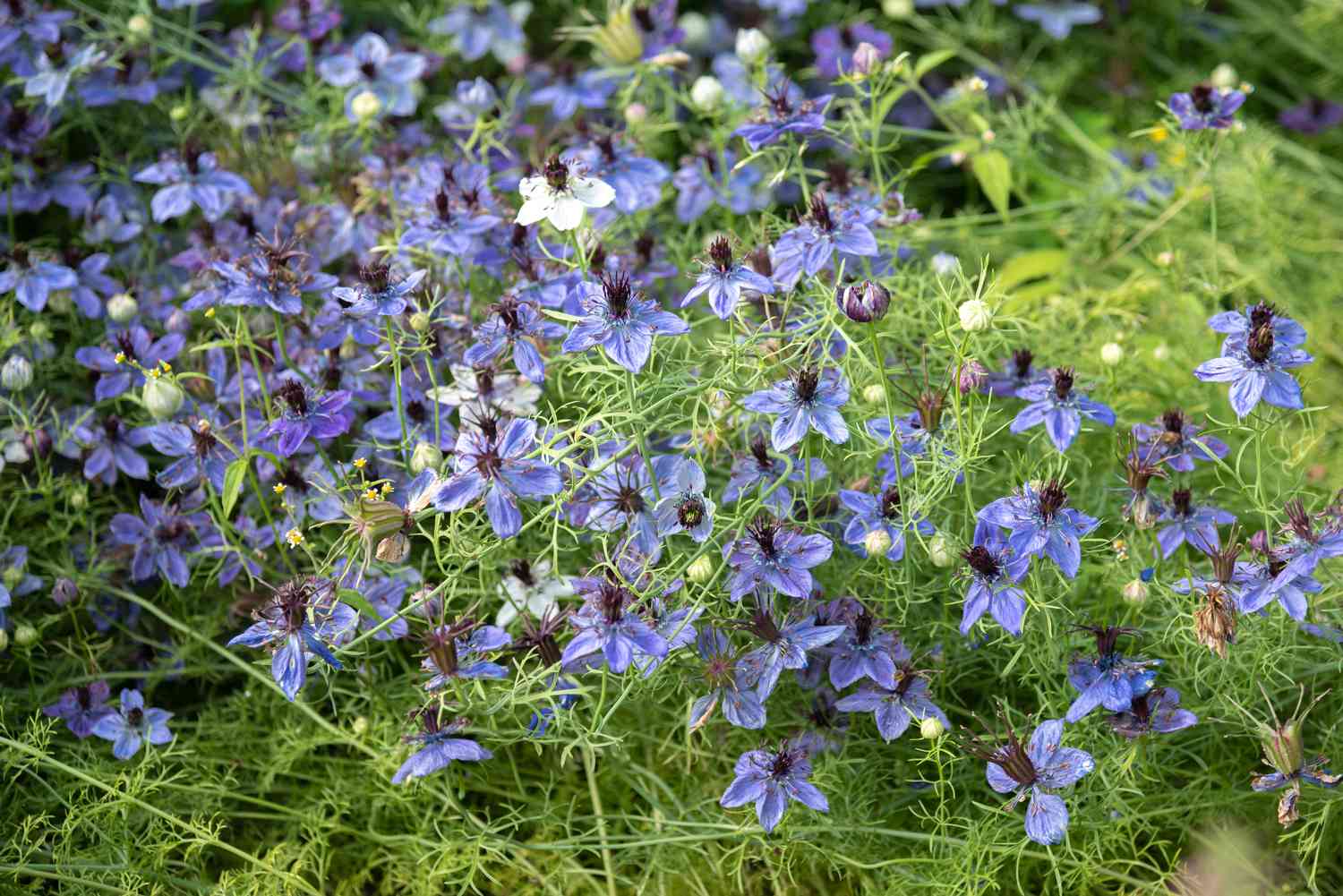
The Spruce / Evgeniya Vlasova Nigella damascena got the name Love in a Mist because of its airy, dill-like foliage that surrounds the flowers. It is a freely seeding annual flowering plant that will tuck itself throughout your garden. The plants do not like to be moved, but you can scatter seeds to spread it to various areas in your garden. The seeds need light to germinate, so do not cover them. Nigella will flower throughout the season, it makes a great cut flower, and has interesting seed heads.
-
10 of 12
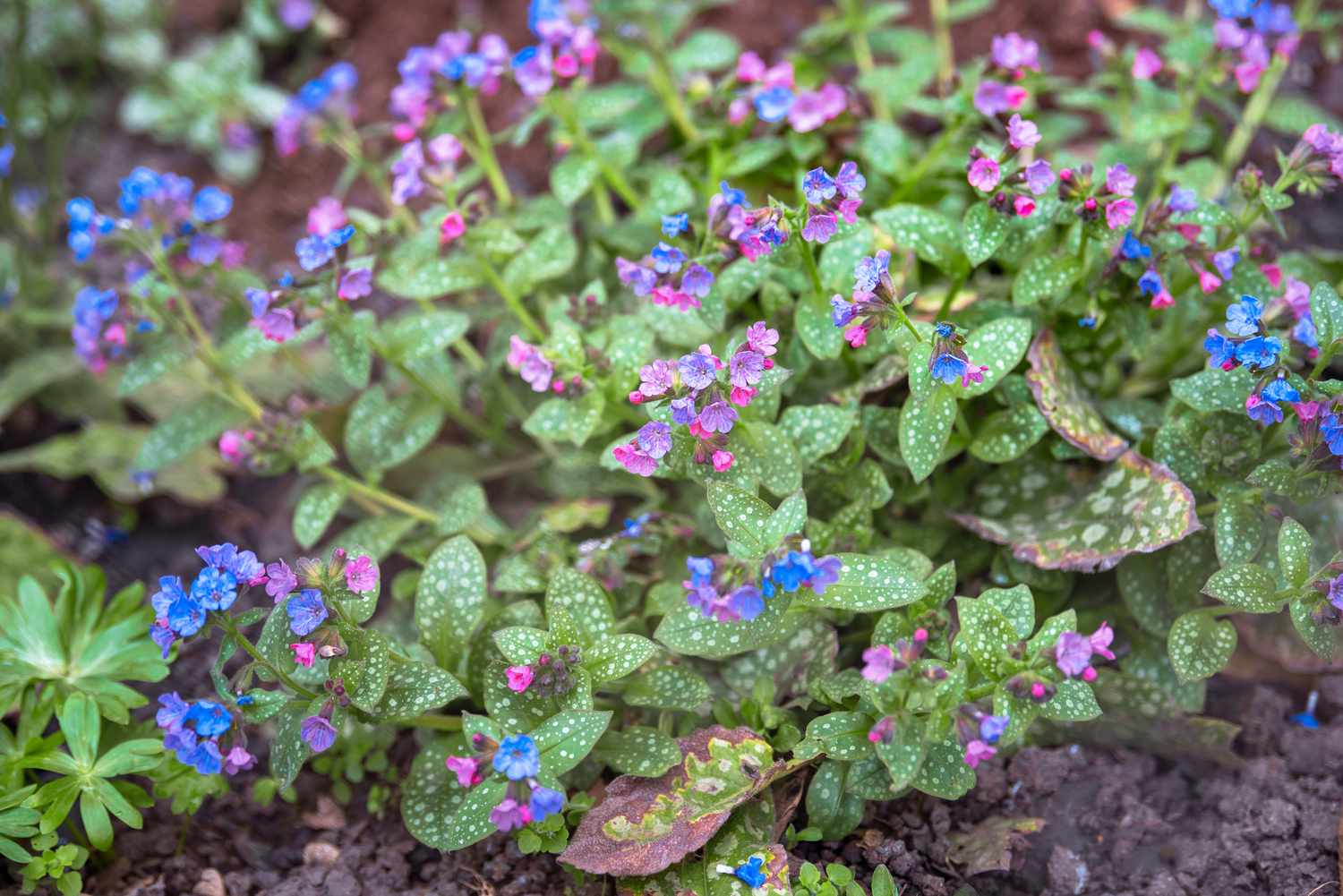
The Spruce / Evgeniya Vlasova Lungwort is one of the first plants to perk up in the spring. And though not all varieties bloom blue, those that do are resplendent. You might be familiar with the variegated leaf varieties. Some are dotted with white, and others are washed with silver. These plants look good all season, though many of the plain green-leaf varieties have the most brilliant blue flowers. These plants are shade lovers and look beautiful in woodland settings.
-
11 of 12
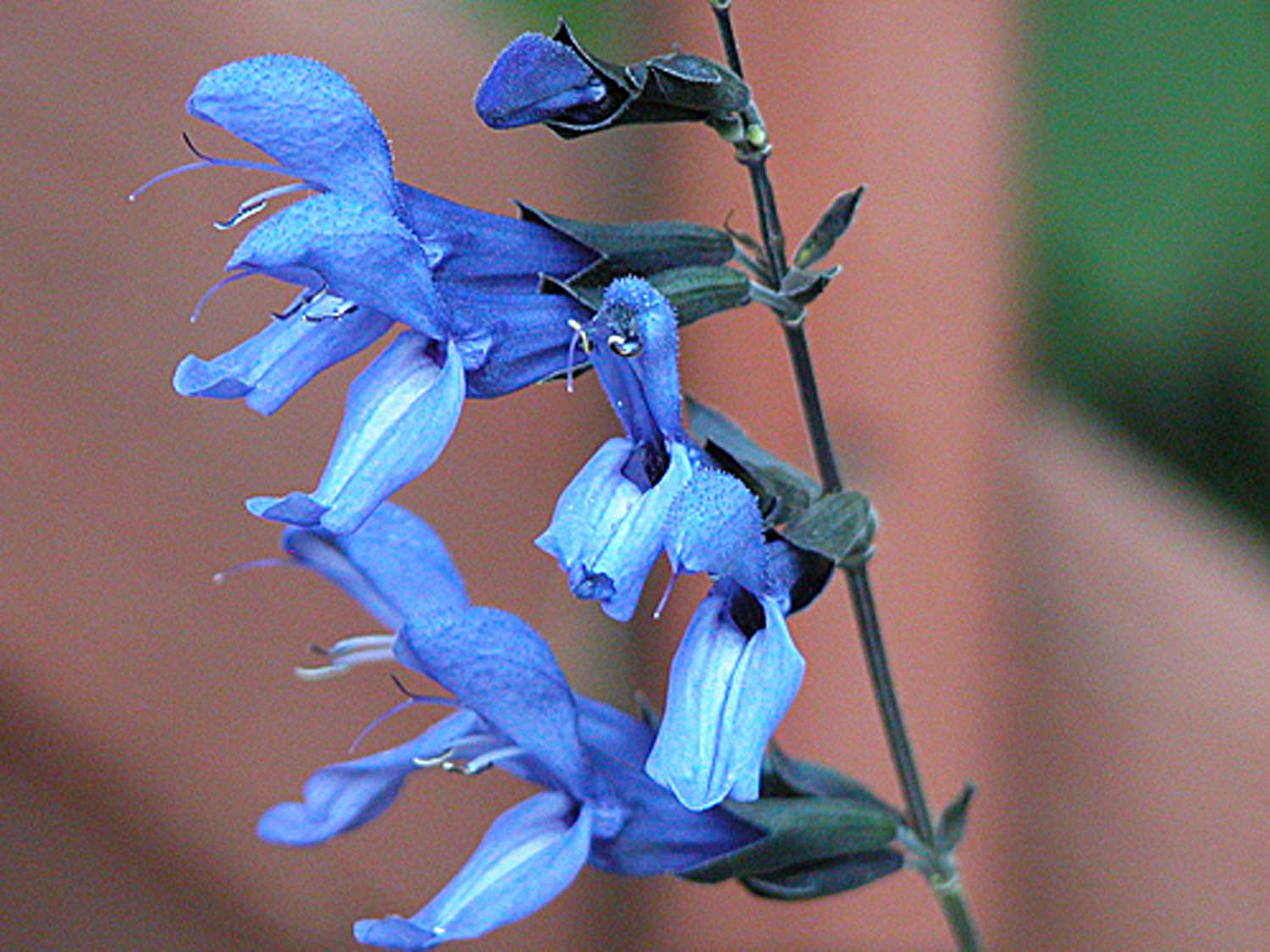
The Spruce / Marie Iannotti The striking combination of vivid dark blue flowers and black sepals on ‘Black and Blue’ sage (Salvia guaranitica) is reason enough to grow this plant. It is also a hummingbird and large butterfly magnet. You might see it listed as Brazilian sage or blue anise sage. It is perennial to USDA hardiness zone 7 and can become aggressive in some areas. In cooler zones, the plant is popular as an annual. It is taller than most of the annual salvias and unique in form and color.
-
12 of 12
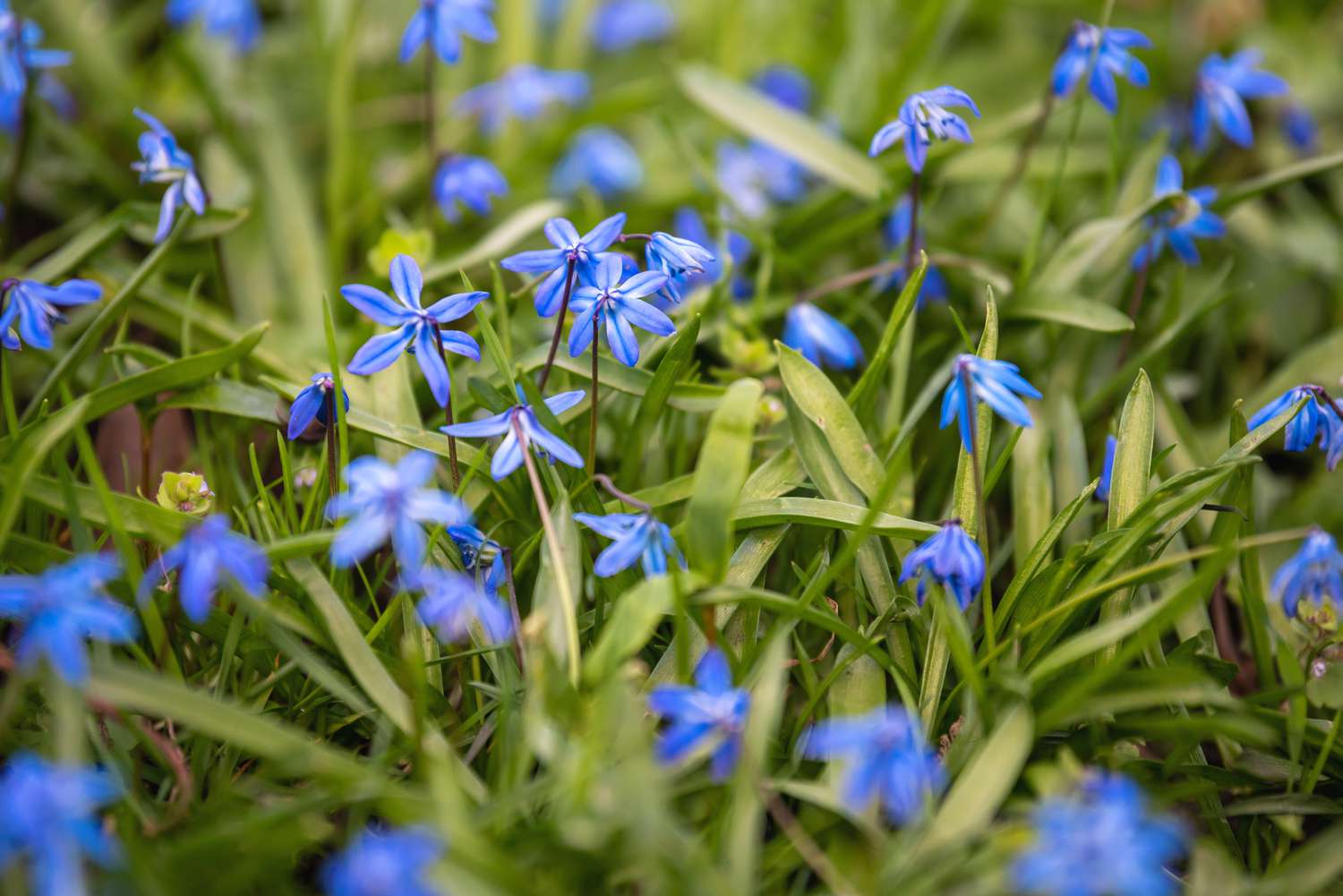
The Spruce / Evgeniya Vlasova It’s called Siberian squill, but these tiny bulbs will naturalize in USDA zones 2 through 8. All the plant needs is a little bit of chill to trigger its winter rest. While dormant, it builds up the energy to reproduce and bloom very early in the spring. When allowed to spread far and wide, it can turn a landscape into a sea of blue flowers. As with most early-blooming bulbs, it usually has few pests or problems. It needs moisture during the growing season and drier conditions while dormant.
